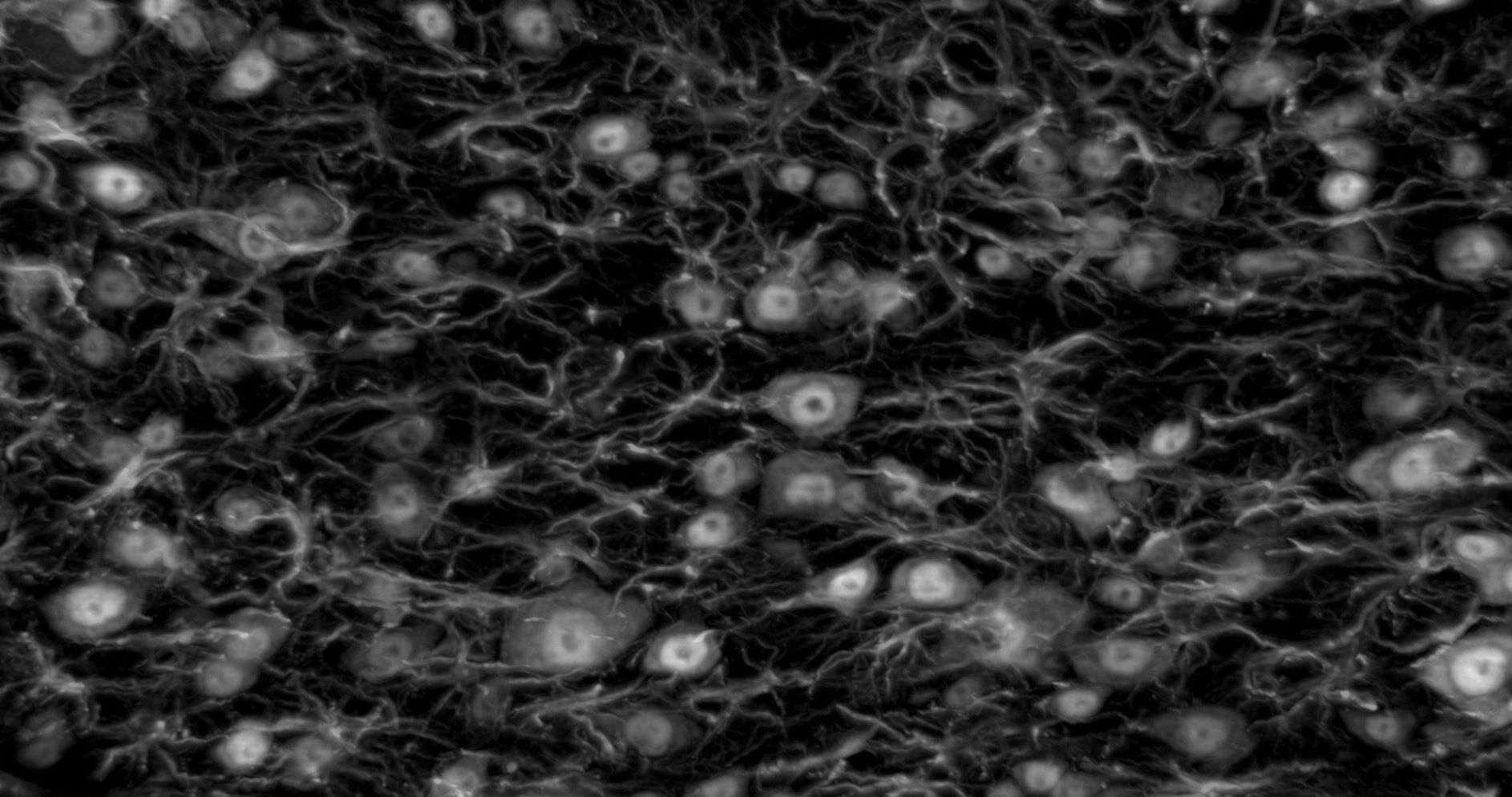Millions live with the devastating aftermath of a neurological injury

BURDA LAB RESEARCH AIMS to HARNESS THE REGENERATIVE POTENTIAL OF THE NERVOUS SYSTEM TO DRIVE recovery.
EXPERIMENTAL | TRANSLATIONAL | DISCOVERY-DRIVEN

| RESEARCH |
[click for a complete record of burda lab research] June | 2022
Divergent transcriptional regulation of astrocyte reactivity across disorders
Burda, J.E. , O’Shea, T.M., Ao Y., Suresh, K.B., Wang, S., Bernstein, A.M., Chandra, A., Deverasetty, S., Kawaguchi, R., Kim, J.H., McCallum, S., Rogers, S., Wahane, S. & Sofroniew, M.V., Nature (2022)
Press release by Cedars Sinai media room
Raw and normalized genomic data — astrocyte RNA-Seq and ATAC-Seq — have been deposited at the NCBI Gene Expression Omnibus under the SuperSeries accession number GSE199482.
Genomics data are also available through a searchable, open-access website (http://tr.astrocytereactivity.com).
AUG | 2018
Required growth facilitators propel axon regeneration across complete spinal cord injury. Nature
Anderson, M.A., O'Shea, T.M., Burda, J.E., Ao, Y., Barlatey, S.L., Bernstein, A., Kim, J. James, N., Rogers, A., Kato, B. Wollenberg, A. L., Kawaguchi, R., Coppola, G., Wang, C., Demming, T.J., He, Z., Courtine, G. and Sofroniew, M.V.
SEPT | 2017
Cell biology of spinal cord injury and repair.The Journal of Clinical Investigation.
O’Shea, T.M., Burda, J.E. & Sofroniew, M.V.
Jan | 2017
Ren, Y., Ao, Y., O’Shea, T.M., Burda, J.E., Bernstein, A.M., Brumm, A.J., Muthusamy, N., Ghashghaei, H.T., Carmichael, S.T., Cheng, L., Sofroniew, M.V.
APR | 2016
Astrocyte scar formation aids central nervous system axon regeneration. Nature
Anderson, M.A.*,Burda, J.E.*, Ren, Y., Ao, Y., O’Shea, T.M., Kawaguchi, R., Coppola, G., Khakh, B.S., Deming, T.J., Sofroniew, M.V.
See also — Nature Commentary "Regeneration: Not everything is scary about the glial scar" S. Liddelow and B. BarreS
Reactive astrocyte genomics data from this
study found here
JAN | 2014
Reactive gliosis and the multicellular response to CNS damage and diseasE. neuron
Burda, J.E. & Sofroniew, M.V.
Jul | 2013
Critical role for PAR1 in kallikrein 6‐mediated oligodendrogliopath. GLIA
Burda, J.E., Radulovic, M., Yoon H., Scarisbrick. I.A.
| Investigators |
Josh BurdA, PhD — principal investigator
Josh Burda is a biomedical scientist with training in molecular neuroscience and a fascination with the innate ability of tissues to remodel and repair themselves. He has carried out glial biology and neural regeneration research for over a decade. Josh received his Phd from Mayo Clinic with isobel scarisbrick and completed his postdoctoral fellowship at uclA with michael sofroniew. Josh was raised in detroit, MI and currently resides in Los Angeles, ca.
In 2018, Josh received a PRESTIGIOUS ‘Pathway to independence’ career transition award from the national INSTITUTES of health (NIH, NINDS). he started burda lab in july 2019 within the Center for neural science and medicine at cedars-sinai medical Center. Josh’s overriding objective is to carry out neurobiology of disease research that fosters the development of new restorative treatments for patients with neurological DISABILITy.
Keshav suresh, Bs — PhD Graduate student
Keshav finished in undergraduate at UC Irvine with a major in Neurobiology and a minor in Comparative Literature. His first research experience was in the lab of Dr. Tallie Z. Baram where he worked with Dr. Jessica L. Bolton and looked at the roles that astrocytes play in the sex differences for outcomes of early-life stress. Ever since then he’s been fascinated by the multi-varied roles that astrocytes can play in a wide range of neurological phenomenon. Keshav is from Cupertino, California and now lives in Marina Del Rey. When he’s not in lab you can catch him at the beach enjoying a sunset, or at a farmer’s market looking for the perfect plum.
> Keshav joined the Burda lab in Winter ’20. His research is focused on applying novel multiplexed spatial technologies to understand the spatiotemporal dynamics of astrocytes after central nervous system injury and in neurological disease states.
Burda Lab ALumni
Brandon Kwon — research assistant, Burda LAb. Current position:
Amar marvi — research assistant, Burda LAb. Current position:
Sarah McCallum, PhD —Postdoctoral Scientist
Sarah is a lover of glial cells, even the unusual ones. She carried out her undergraduate degree in Neuroscience at the University of Glasgow during this time, she joined Vassilis Pachnis’s lab at the NIMR (London UK), as part of a combined Masters where she studied the development and organisation of mucosal enteric glia. She stayed on in Vassilis’s lab to do her PhD at the Francis Crick Institute (London, UK), where she investigated the progenitor potential of enteric glia in zebrafish. Sarah is from Glasgow, Scotland and currently resides in Los Angeles, CA
>Sarah joined The burda lab in the fall 19’ . Her research is uncovering new pathways of glia-neuron interaction that regulate repair of neural circuits after spinal cord injury.
interested in joining the team?!
burda lab is always keen to connect with talented and enthusiastic investigators looking for an exciting new research ENDEAVOR.
Drop us a line here.
| resources |
Astrocyte Reactivity regulation Browser
a searchable, open-access database for transcriptional regulatory signatures of reactive astrocytes.
explore gene regulatory programs underlying diverse reactivity states in mice and humans.
Includes transcriptional regulators and downstream target genes in reactive astrocytes from a wide range of neurological disorders and injuries.
The Astrocyte Reactivity RNA-Seq Browser
a searchable, open-access, genome-wide transcriptome database for reactive astrocytes.
| Location |
burda lab is located in The 11-story Advanced Health Sciences Pavilion (AHSP). AHSP breaks down traditional boundaries by combining world-class research, patient care, education and training in one building.
Burda Lab is part of the new center for neural science and medicine at cedars-sinai medical center.
Burda lab is affiliated with the department of neurology, department of biomedical science and the regenerative medicine institute
Address:
Advanced Health Sciences Pavilion
127 S San Vicente Blvd , Lab A8700
Los Angeles, CA 90048
>> GET Directions + come say HI : )















